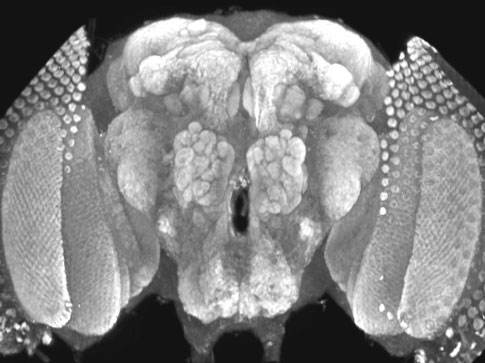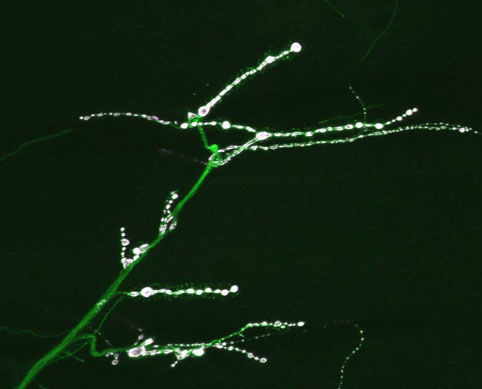 |
|
 |
 |
 |
 |
|
|
B.S. in Physiology at the Univ. of Calcutta, India, 1986 Ph.D. in Molecular Biology at Tata Institute of Fundamental Research, 1999 Sudipta characterized how synaptotagmins control neurotransmitter release and how they are properly sorted to distinct vesicle populations. Ca2+ influx into presynaptic nerve terminals activates synaptic vesicle exocytosis by triggering fast synchronous fusion and a slower asynchronous release pathway. In addition, a brief rise in [Ca2+] following an action potential has been correlated with a form of short-term neuronal plasticity termed facilitation. Although the synaptic vesicle protein Synaptotagmin 1 (Syt 1) has been implicated as the Ca2+ sensor for synchronous synaptic vesicle fusion, the molecular identity of the Ca2+ sensor(s) that mediate facilitation and asynchronous release are unknown. To test the hypothesis that other dynaptotagmin isoforms mediate the additional effects of Ca2+ on presynaptic vesicle trafficking, Bill Adolfsen and Sudipta tested the role of the two remaining Drosophila panneuronal isoforms, Synaptotagmin 4 (Syt 4) and Synaptotagmin 7 (Syt 7), in synaptic transmission. They showed that paired-pulse facilitation remains intact in mutant animals that lack Syt 1, indicating that Ca2+ acts at distinct sites to trigger synchronous fusion versus facilitation. In addition, mutations in Syt 4 and Syt 7 do not disrupt asynchronous release or facilitation, either alone or in the background of Syt 1 mutants. Sudipata’s work suggests than a non-synaptotagmin Ca2+ sensor(s) functions for both facilitation and asynchronous release. In the light of these findings, the presence of two presynaptic Ca2+ sensors can be placed in a biological context, one Ca2+ sensor (Syt 1) devoted to baseline synaptic transmission and a second unknown Ca2+ sensor for short-term synaptic plasticity. All synaptotagmin isoforms are structurally similar, containing a short intravesicular tail, a single N-terminal transmembrane domain, a small cytoplasmic linker and two C-terminal C2 domains. In Drosophila, the Synaptotagmin 1 (Syt 1) isoform is specific to synaptic vesicles, while the 6 remaining isoforms are differentially localized to distinct vesicle populations in neurons and certain non-neuronal cells. Bill and Sudipta have also characterized targeting signals within Syt 1 that direct its localization to synaptic vesicles by generating transgenic Drosophila expressing Syt 1 chimeras. Synaptic localization of Syt 1 requires the cytoplasmic C2 domains of the protein, as truncated proteins containing only the N-terminal intravesicular tail, the transmembrane domain, and the cytoplasmic linker are not properly targeted to synapses. In addition, synaptic targeting requires sequence specificity within Syt 1’s C2 domains; chimeras containing the N-terminus of Syt 1 with Syt 4, Syt 7, Syt a or Syt b C2 domains also fail to target presynaptically. These results indicate that the C-terminal cytoplasmic C2 domains of synaptotagmins participate in the differential targeting of this protein family to unique subcellular vesicular compartments within neurons. |
|